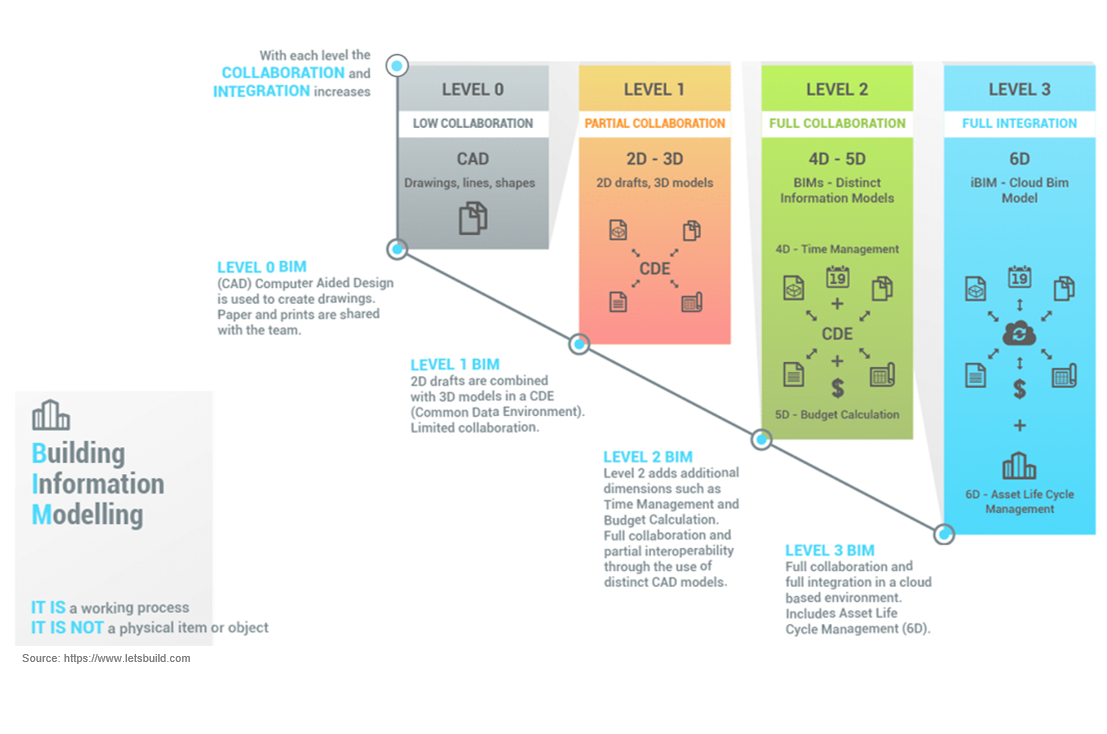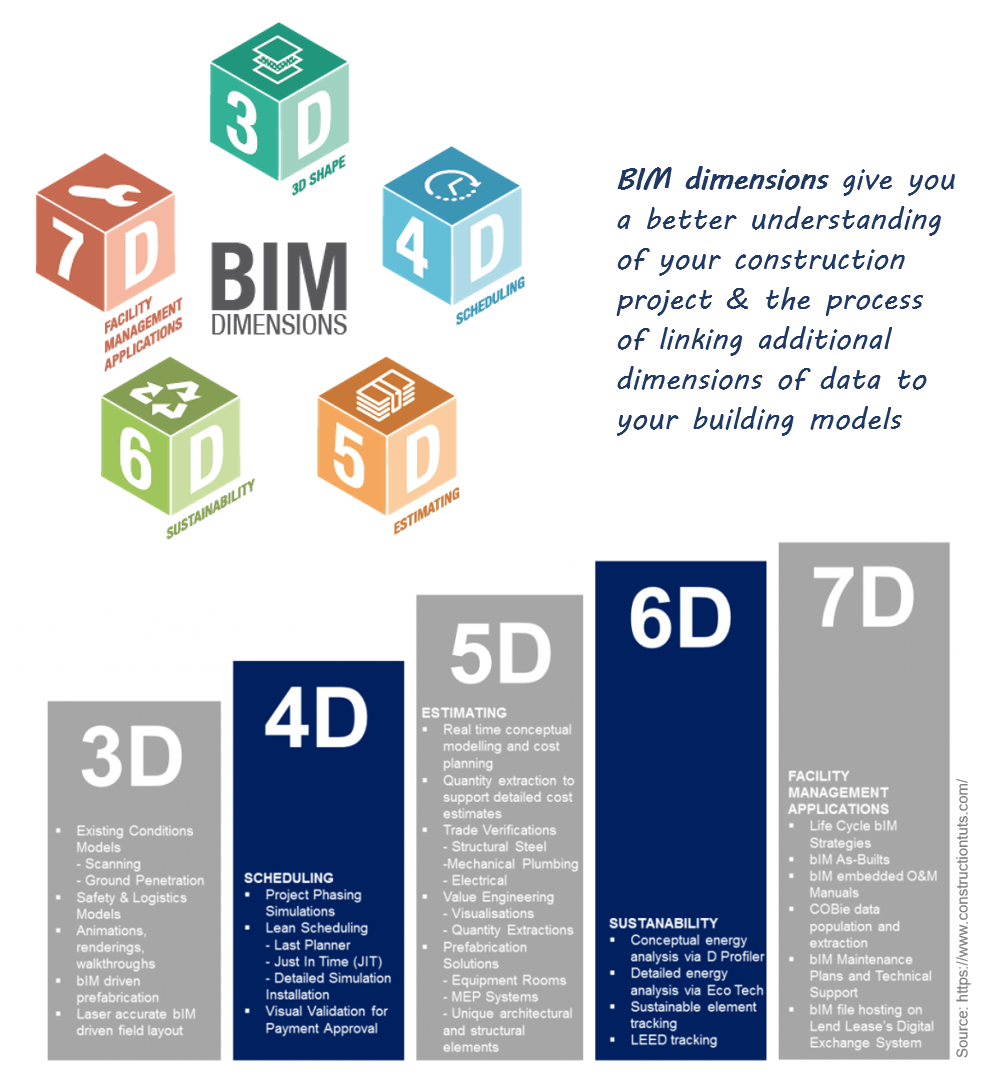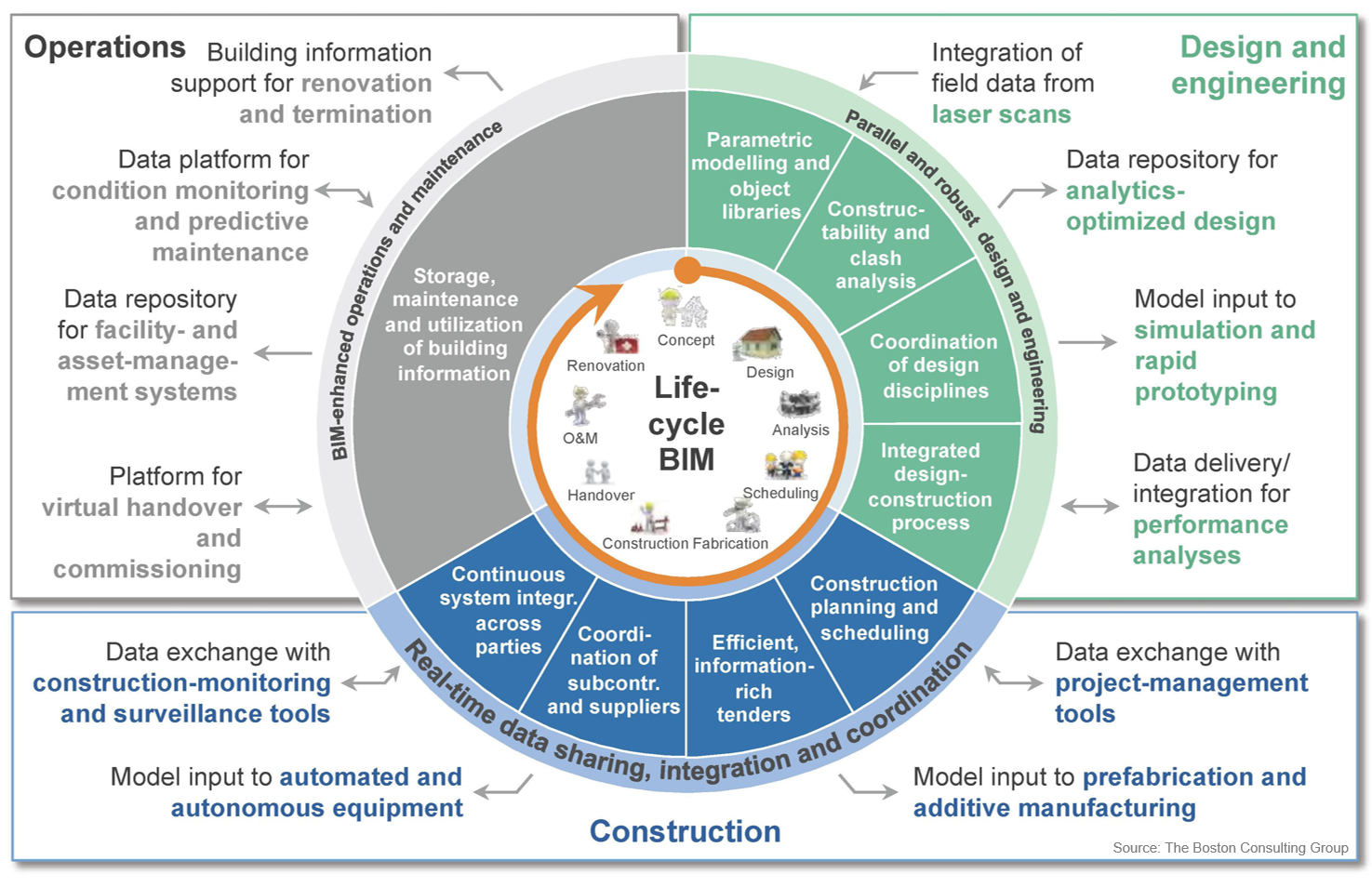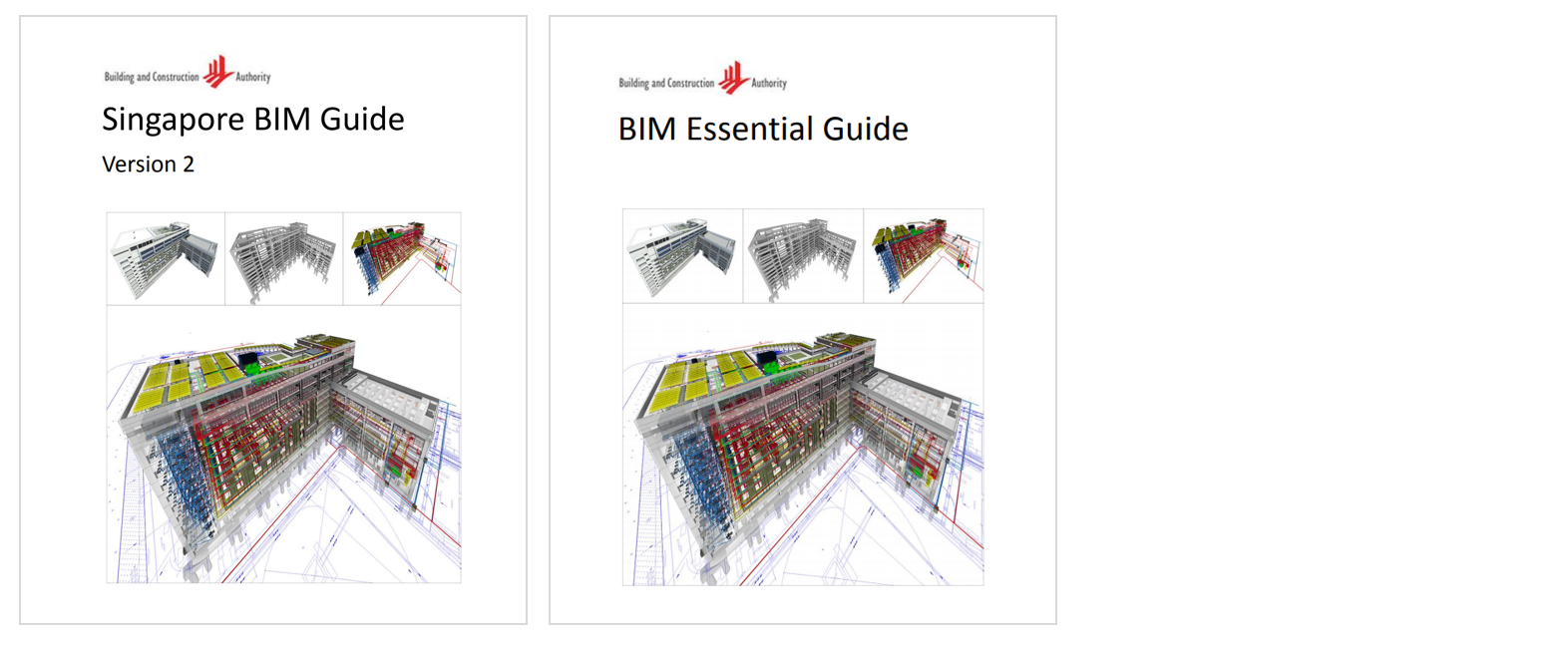Building Information Modelling (BIM)
Building Information Modelling (BIM) has become a crucial tool to help building professionals improve their effectiveness & efficiency as building projects are becoming complex.
 As an integrated design, documentation and construction tool, the strategic implementation of BIM in building projects enhances communication & multi-disciplinary collaboration among the various project stakeholders. This significantly improves the design, construction & operation processes with productivity gains & returns.
As an integrated design, documentation and construction tool, the strategic implementation of BIM in building projects enhances communication & multi-disciplinary collaboration among the various project stakeholders. This significantly improves the design, construction & operation processes with productivity gains & returns.


BIM Dimensions
Linking extra ‘dimensions’ of data to your information models has the potential to give you a richer understanding of your construction project - how it will be delivered, what it will cost and how it should be maintained.


How does BIM optimise each phase of the construction process?
BIM can be implemented in different ways throughout a project’s life cycle:
- Design and planning: It is a very useful tool for simulation, prototyping and analysis, and it also allows for the inclusion of data from laser scanners. It works as a data repository for the optimised design and performance analytics.
- Construction phase: It collaborates in the exchange of information with project management tools, in the monitoring of construction work, and in the coordination with suppliers, among other aspects
- Operations and maintenance: This methodology is very practical for deliveries and orders, as a data repository for service management systems, for predictive maintenance and for the renovation and termination of works.

Related Content


